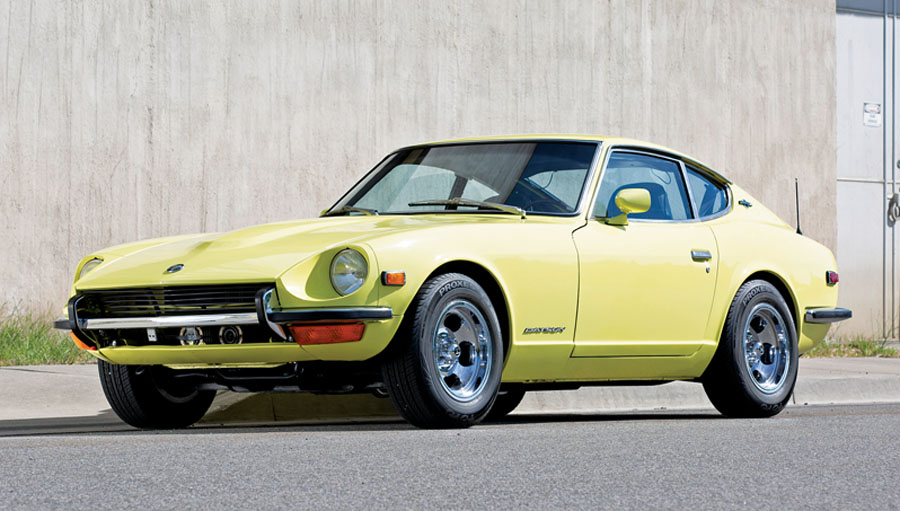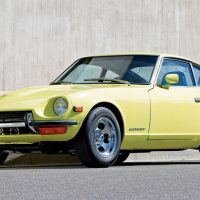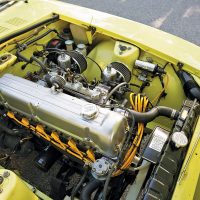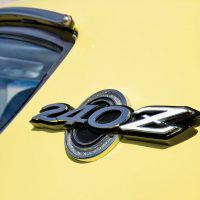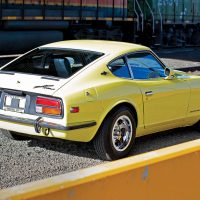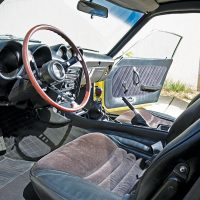SCM Analysis
Detailing
| Vehicle: | 1971 Datsun 240Z |
| Years Produced: | 1970–73 |
| Number Produced: | 148,115 |
| Original List Price: | $3,526 |
| SCM Valuation: | $35,000 |
| Tune Up Cost: | $200 |
| Chassis Number Location: | Right-side firewall |
| Engine Number Location: | Right-side inner fender |
| Club Info: | Classic Z-Car |
| Website: | http://www.zcca.org |
| Alternatives: | 1965–74 MGB-GT, 1971–74 Alfa Romeo Spider 2000, 1969–76 Triumph TR6 |
| Investment Grade: | B |
This car, Lot 73, sold for $44,800, including buyer’s premium, at Bonhams’ Quail Lodge Auction in Carmel Valley, CA, on August 15, 2019.
Four years ago, we covered a notable market achievement. A Datsun 240Z sold for $40,700 (February 2015, Market Report Roundup, p. 150).
At the time, it was the high-water mark for a street-legal 240Z, and the SCM Pocket Price Guide listed the 240Z with a price range of $8,000–$14,000.
For a while, it looked like prices would go much higher. It was only five months later that a seller refused a $52,000 bid for a similar car. (SCM Platinum Auction Database # 6797382). This year, however, a $44,800 sale price is well within the ballpark for a well-restored 240Z. This year’s price guide lists a $35,000 median price for these cars.
The current high price paid for a street 240Z is $67,100 (SCM# 6892199), bid this past January at Barrett-Jackson Scottsdale. The rest of the market is predictably all over the place, with sales ranging from $12,000 (SCM# 6908208) to $55,000 (SCM# 6892200) in 2019.
It’s fair to say that all this activity points to a maturing market for the early 240Z — and, to a lesser extent, for all the original Z-cars that followed through 1978. The past four years have not shown unusual appreciation, so no one could call it a bubble market. Instead, the 240Z market looks like a sober recognition of consensus on values.
The obvious choice
When it comes to Japanese sports cars, the 240Z is an obvious choice for a bellwether model. The 240Z was Datsun’s breakthrough model because it was good-looking, affordable and offered better performance than its competition. Datsun buyers got four-wheel independent suspension, a 6-cylinder overhead-cam engine rated at 151 horsepower, and a sport interior wrapped in a package that was at least as attractive as anything coming from the British, Germans or Italians.
Datsun also undercut the Europeans on price rather significantly. At $3,526, a 240Z was a little more than half the price of a base 1970 Porsche 911T — or the same price as a base Porsche 914.
Another reason the 240Z is a good touchstone is that there were enough of them made to maintain a real market.
Datsun sold 16,215 examples of the 240Z in 1970, and 33,684 in 1971. Then Datsun really got rolling, selling 52,628 in 1972 and 45,588 in 1973. Other contemporary Japanese jewels, such as the Mazda 110S Cosmo Sport or the Toyota 2000GT, may sell for much more, but finding one to buy is the bigger challenge.
Among 240Z aficionados, there’s special respect for the Series 1 cars, produced through the middle of the 1971 model year. These are easily identified by the air vents located towards the bottom of the hatch, under the rear window. Those vents were deleted because of a tendency to pull exhaust fumes into the cabin. Later 240Z models are known as Series 2, but the distinction doesn’t seem to affect sale prices much.
A clean restoration
Our subject 240Z was the recipient of a detailed restoration, with a few light modifications for drivability. The restorer has a long history with Datsuns and was able to correct earlier modifications such as the popular habit of inserting a 280Z engine block when the original 2.4-liter got tired.
In addition to putting a correct engine back in the car, the restorer used a later fuse block and electronic ignition. Both of those are nearly invisible upgrades that enhance reliability. The only questionable choice was to reupholster the original vinyl seats with cloth inserts for comfort. In the grand scheme of things, that’s hardly a flogging offense.
Then, like the vast majority of 240Zs on the road today, the car has period-correct aftermarket dish mags instead of the admittedly dowdy original steel wheels.
The highest praise should be reserved for the decision to stick with the correct Sunshine Yellow color, instead of opting for something more appealing to today’s sensibilities.
Great expectations
Taken in the context of all 240Z sales in 2019, this sale was right on the money. However, Bonhams estimated the car would sell for $50,000 to $70,000 — and offered the car with no reserve.
Whether it’s because of unrealistic seller expectations or reluctant buyers, missed estimates were the story of the week in Monterey. Taking that into account, the buyer seems to have dodged inflation but still paid a fair price for the quality of the car offered. ♦
